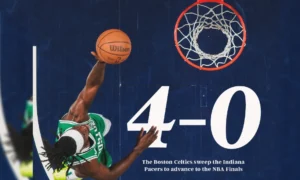When Tennis Balls Turned Yellow, What Was Previous Color?
The modern tennis ball is precisely 52 years old.

It has been 52 years since the invention of the tennis balls. Yes. One of the oldest sports in existence is tennis. Due to the genius of Major Wingfield or Augurio Perera (or both), it originated in the Middle Ages and was played extensively during the Baroque era before being officially recognized as a sport in the 19th century.
It goes without saying that there were always balls in play since, even though the net can be “imagined,” the court is unmarked, and any kind of racquet can be used for the exchange; without balls being passed from one player to another, tennis cannot exist.
Goyo Ybort, a specialist in tennis materials, claims that there were 290 ball models with the labels of 54 distinct brands that had been authorized by the International Tennis Federation in 2022, the year the present ball model celebrated its 50th anniversary.
There was only one ball model permitted until 1989. Balls designed to play at a height were allowed in that year, and currently there are eight varieties that are recognized. However, for all of them, the weight must range from 56 to 59.4 grams, the diameter must range from 6.54 to 7.3 centimeters, and the bounce, when it falls from a height of 2.54 meters, must range from 1.35 to 1.47 meters.
Which hue are the tennis balls?
Their same hue, optical yellow, was officially chosen by the ITF in 1972, which accounts for the present ball’s “age.” This is another similarity amongst them.
Earlier than that, the color of the balls varied according on the playing surface—they may be either black or white. Balls of white are still made. For novices, there are furthermore red, orange, and green balls. Additionally, personalized balls in various shades of blue, black, purple, or pink are available. Nonetheless, the ball is yellow in all recognized senior competitions.
Due to the requirements of television transmissions, the hue changed. Around the world, television went color in 1972 (but Spain did not adopt color television until five or six years later).
Towards the end of the 1960s, the legendary documentary filmmaker David Attenborough was in charge of the BBC broadcasts, which included Wimbledon, naturally. And when the conventional white ball got close to the play rectangle’s lines, he saw that its visibility was not entirely flawless.
How Tennis Balls are Made - Most Satisfying Production Process You Probably Didn’t See
How the color o tennis balls was altered on television?
Tennis was thriving in 1972, with women’s professional tennis becoming more popular and the professional and amateur circuits uniting. As tennis evolved into a major global event, television played a crucial role.
According to a research commissioned by the International Tennis Federation, which oversees the regulations, viewers could more easily follow the yellow ball because it was more visible. Furthermore, since it was authorized to use synthetic materials in professional tournaments, the courts started to take on multiple colors.
It was also decided that every ball should have a consistent white or yellow surface. The parameters of the television image and the color of the various surfaces imposed yellow, as Argentine tennis historian Eduardo Puppo clarified, although other colors were tested in that investigation. Furthermore, White frequently became unclean, particularly on clay courts.
White was still in use for a for more years in some tournaments, such the Davis Cup or the original Wimbledon, which refused to change until 1986 since its finals were not held on Sundays until the television networks gave it enough money.
And so tennis balls were either white or black until the 1970s, and for nearly a century before that. Though some hesitant individuals still refer to them as “green,” they are now yellow. And the technological and commercial explanation is that it makes tennis more visible, which helps to increase sales.








